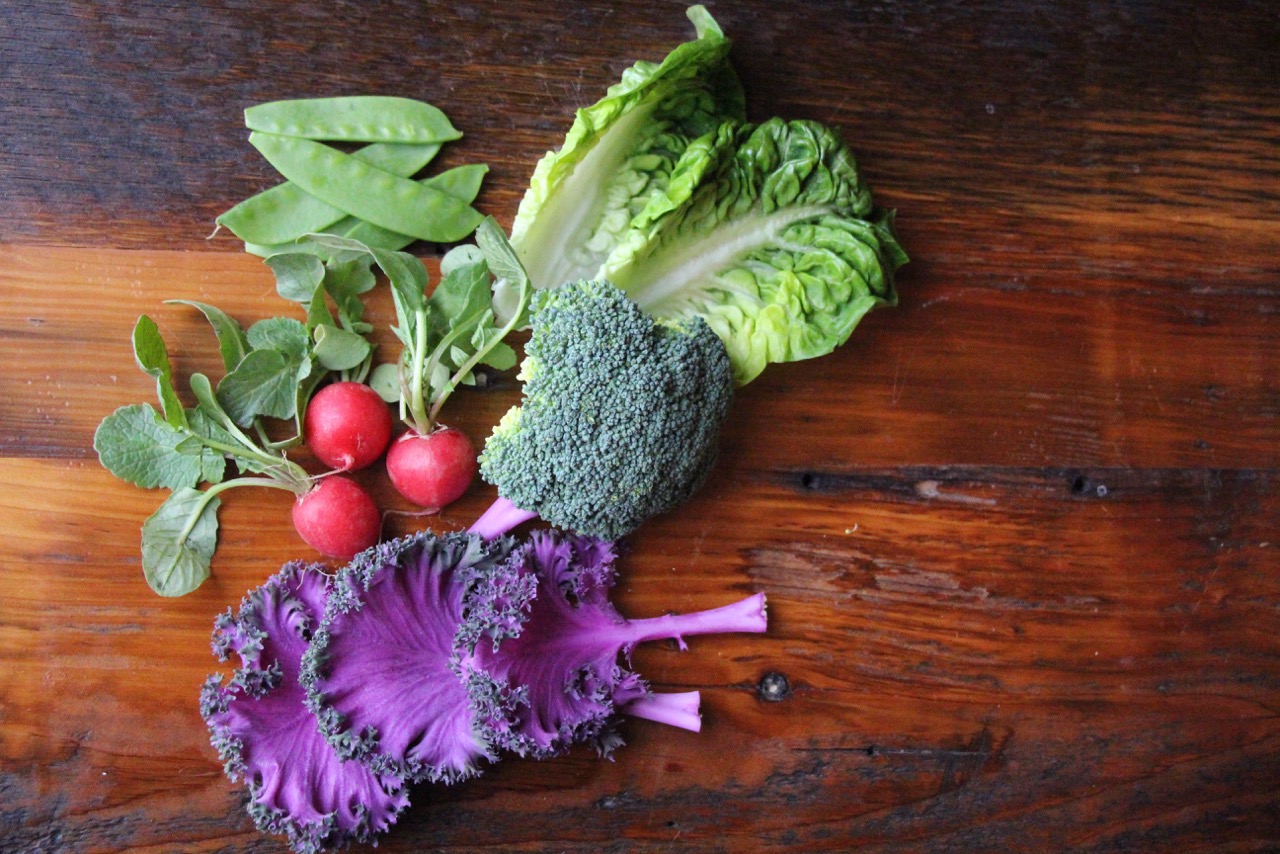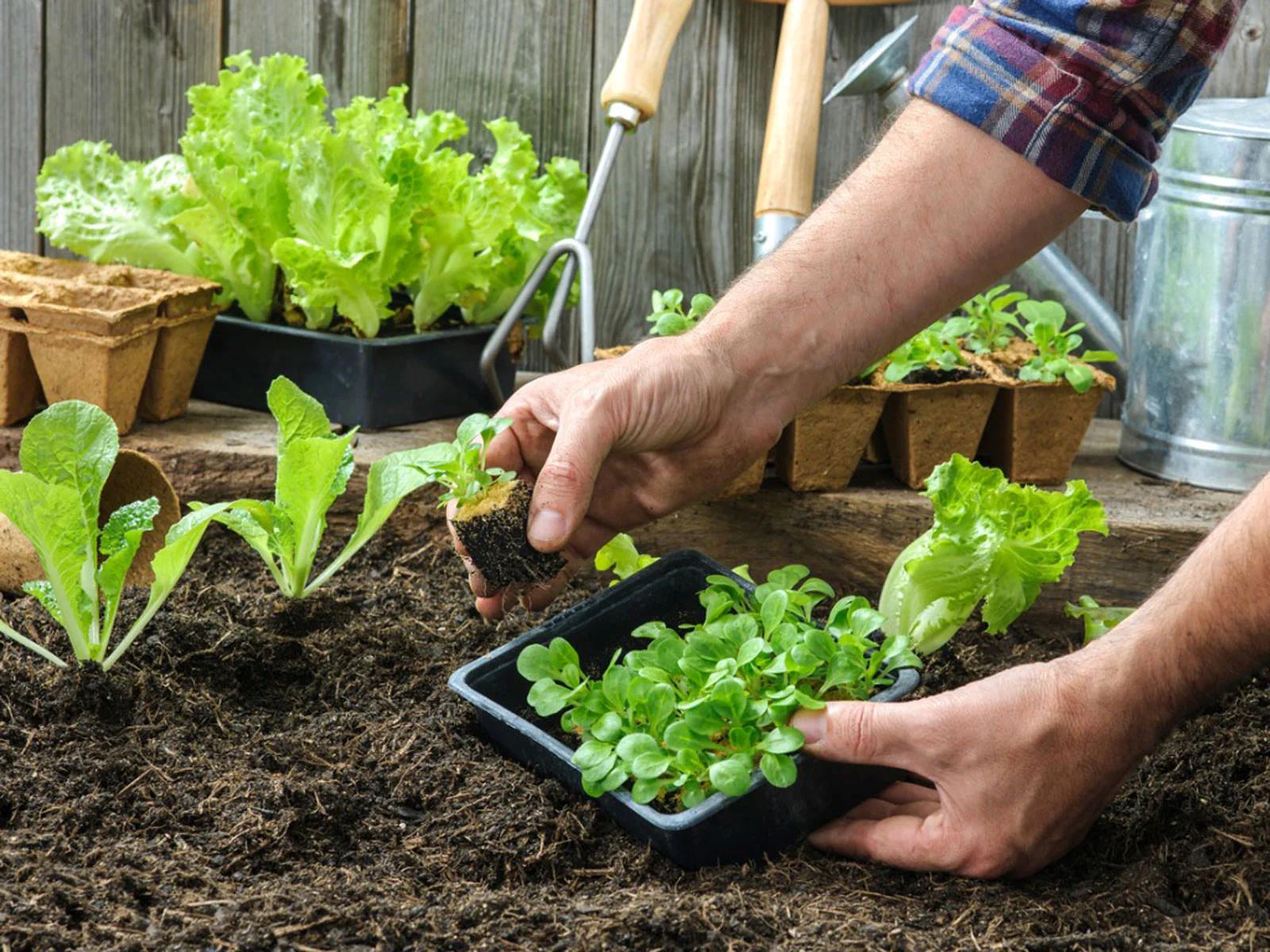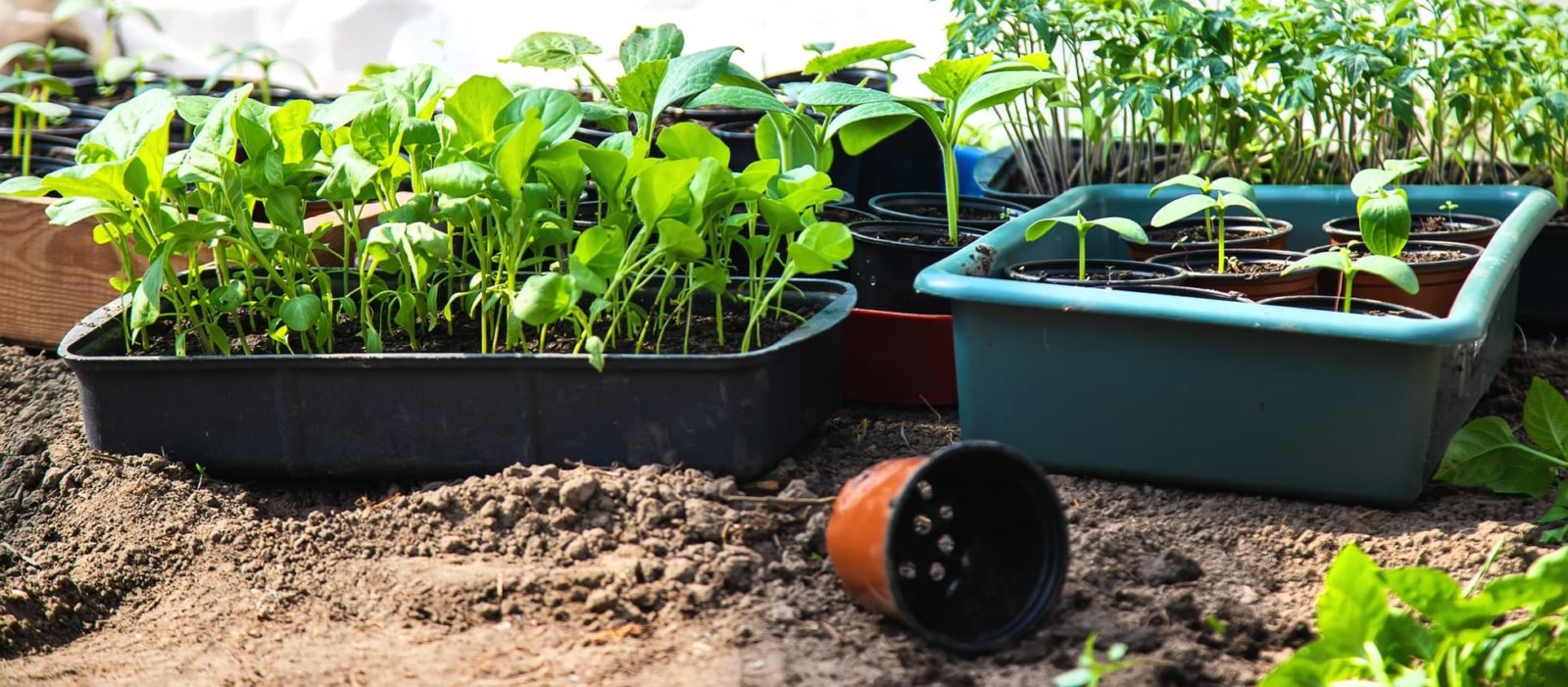Home>Types of Gardening>Edible Gardening>What Vegetables To Plant Now


Edible Gardening
What Vegetables To Plant Now
Modified: January 22, 2024
Looking to start your edible gardening journey? Discover the best vegetables to plant now and turn your garden into a bountiful food source.
(Many of the links in this article redirect to a specific reviewed product. Your purchase of these products through affiliate links helps to generate commission for Chicagolandgardening.com, at no extra cost. Learn more)
Table of Contents
Introduction
Welcome to the world of edible gardening! Whether you have a spacious backyard or a small balcony, growing your own vegetables can be a rewarding and fulfilling experience. Not only does it provide you with fresh and nutritious produce, but it also allows you to reconnect with nature and gain a greater appreciation for the food you consume.
As the seasons change, so do the varieties of vegetables that thrive in your garden. Knowing what vegetables to plant during different times of the year is essential for a successful harvest. In this article, we will explore the vegetables that you can plant now, categorized by the four seasons: spring, summer, fall, and winter.
Before we dive into the specific vegetables for each season, it’s important to note that the climate and region you live in can significantly impact what you can successfully grow. Understanding your local climate and the specific requirements of different vegetables will help you make informed choices for your garden.
Whether you’re a total beginner or a seasoned gardener, this article will guide you on the best vegetables to plant now, providing you with a variety of options to suit your preferences and growing conditions. So let’s roll up our sleeves and dig into the world of edible gardening!
Spring Vegetables to Plant Now
Spring is an exciting time for gardeners as it signifies the start of the growing season. The weather becomes warmer, and the soil becomes more manageable, creating ideal conditions for a wide range of vegetables to thrive.
One popular vegetable to plant in the spring is lettuce. It’s a versatile crop that can be grown in containers or directly in the ground. Varieties like Butterhead, Romaine, and Leaf lettuce are excellent choices. You can start harvesting the leaves when they reach the desired size, providing you with fresh salads throughout the season.
Another spring favorite is peas. Whether it’s snap peas, snow peas, or shelling peas, they are easy to grow and provide a delicious addition to any meal. Plant them in a sunny spot with well-draining soil, and provide support for them to climb. Enjoy the sweet taste of freshly picked peas straight from the garden.
Radishes are a quick-growing crop that adds a pop of color and crunch to salads and sandwiches. They are perfect for spring planting since they prefer cooler temperatures. Sow the seeds directly into the soil and watch them sprout and mature within a few weeks. Look for varieties like Cherry Belle or French Breakfast.
Carrots are another spring vegetable that can be sown directly in the garden. Choose a sunny spot with loose, well-draining soil and sow the seeds according to the packet instructions. With a little patience, you’ll be rewarded with sweet and vibrant carrots to harvest in a few months.
If you have a bit more space in your garden, consider planting broccoli and cauliflower. These cool-season crops thrive in the springtime. Choose healthy seedlings from your local nursery or start them from seeds indoors in late winter. Once transplanted, provide them with adequate water and watch as they develop into nutritious and delicious additions to your meals.
These are just a few examples of the many vegetables that you can start planting in the spring. Remember to check your local gardening guides or consult with experts in your area for more specific advice on the best vegetables to grow during this season.
Summer Vegetables to Plant Now
Summer is a bountiful season for vegetable gardening, with plenty of warm weather and long days of sunshine. This is the perfect time to plant a variety of heat-loving vegetables that will thrive in the summer heat and provide you with a delicious harvest.
Tomatoes are a summer garden staple. There are countless varieties to choose from, including beefsteak, cherry, and heirloom tomatoes. Start them from seeds indoors or purchase young plants from your local nursery. With proper support and regular watering, you’ll soon be enjoying juicy and flavorful tomatoes straight from the vine.
Cucumbers are another popular choice for summer planting. Their crisp texture and refreshing taste make them a favorite for salads, pickles, and even refreshing summer drinks. Plant cucumber seeds directly in the ground or in containers, ensuring they have enough space to grow and climb.
Zucchini and summer squash thrive in the heat of summer and can be incredibly prolific. These versatile vegetables can be sliced and grilled, used in stir-fries, or baked into delicious bread. Start them from seeds or nursery plants, and make sure to harvest them when they are still young and tender for the best flavor.
Peppers, both sweet and hot varieties, love the warm summer weather. Whether you prefer bell peppers for stuffing or jalapenos for adding some heat to your dishes, planting peppers in the summer will yield a productive harvest. Start them from seeds indoors or purchase young plants and provide them with full sun and well-drained soil.
Beans, such as green beans and pole beans, are excellent choices for summer planting. These fast-growing vegetables can produce an abundant crop in a short amount of time. Provide them with support and regular watering, and enjoy the satisfaction of picking fresh beans straight from your own garden.
Remember to keep your summer garden adequately watered, as the hot temperatures can quickly dry out the soil. Mulching around your plants will also help retain moisture and suppress weeds. Additionally, be on the lookout for pests and take necessary measures to prevent damage to your crops.
The summer season offers a wide range of vegetables to grow in your edible garden. Choose the ones that suit your taste preferences and growing conditions, and enjoy the taste of fresh summer produce throughout the season.
Fall Vegetables to Plant Now
Fall is a fantastic time to continue your gardening journey and extend your harvest season. As the weather starts to cool down and the days become shorter, there are still plenty of vegetables that thrive in these conditions. Planting them in the fall ensures a fresh and abundant harvest well into the cooler months.
One popular fall vegetable is kale. This leafy green is not only highly nutritious but also incredibly versatile in the kitchen. There are many varieties to choose from, including curly kale and Tuscan kale. Sow the seeds directly in the ground or purchase young plants from your local nursery. With proper care and regular harvesting of individual leaves, you can enjoy kale throughout the fall and even into winter.
Brussels sprouts are another fantastic option for fall planting. These small, cabbage-like vegetables develop along a tall central stalk. Start them from seeds indoors during the summer or purchase young plants from a nursery. They require a longer growing season, so planting them in late summer or early fall is ideal. Harvest the sprouts from the bottom up as they reach a desirable size, and savor their distinct, nutty flavor.
Root vegetables, such as carrots, turnips, and beets, thrive in the cooler temperatures of fall. The sweet and earthy flavors of these vegetables are enhanced when grown in the autumn months. Sow the seeds directly into the ground, ensuring the soil is well-drained and free from rocks. With regular waterings and proper thinning as they grow, you can harvest these flavorful root vegetables throughout the fall season.
Cabbage is another cool-season vegetable that is perfect for fall planting. Look for varieties like green cabbage, red cabbage, or Savoy cabbage. Choose healthy young plants and give them plenty of space to grow. Harvest the cabbage heads when they reach a firm and compact size, and enjoy their crunchy texture and distinct taste in soups, slaws, or stir-fries.
Don’t forget about planting leafy greens like spinach and lettuce in the fall. These cool-season vegetables thrive in the crisp autumn weather. Sow the seeds directly in the ground or in containers, and ensure they receive enough sunlight and regular waterings. Harvest the leaves as they mature, and enjoy the fresh taste of these vibrant greens in salads or sautés.
By planting these fall vegetables, you can extend your gardening season and continue to enjoy a variety of fresh produce even as the temperatures start to drop. Keep in mind that the specific planting times and varieties may vary depending on your climate and location, so consult local gardening resources for the best results.
Winter Vegetables to Plant Now
Winter may seem like a challenging time for vegetable gardening, but there are actually many delicious and cold-hardy vegetables that can thrive in the colder months. By planting the right varieties and providing some protection, you can continue to enjoy fresh homegrown produce during the winter season.
One popular winter vegetable is kale. This hearty and nutritious leafy green can withstand frost and even snow. Varieties such as Lacinato or Red Russian kale are particularly well-suited for winter growing. Sow the seeds in late summer or early fall, and you’ll be able to harvest their tender leaves throughout the winter months.
Winter spinach is another excellent choice for a cold-hardy winter vegetable. Look for varieties like Bloomsdale or Winter Giant. Start the seeds in late summer or early fall, and ensure they receive enough sunlight. Spinach is a versatile green that can be used in salads, stir-fries, or even sautéed as a side dish.
Carrots can also be grown during the winter season. By planting them in the fall, you can enjoy a harvest of sweet and flavorful carrots throughout the winter months. Choose cold-hardy varieties like Bolero or Nelson, and ensure the soil is well-drained to prevent rotting. Covering the carrot bed with a layer of mulch or straw can help insulate them from harsh winter temperatures.
Winter radishes, such as Daikon or Black Spanish radishes, are excellent options for winter planting. These root vegetables have a spicy flavor and unique texture, adding a kick to your winter dishes. Sow the seeds in the late summer or early fall, ensuring they have enough space to grow. Harvest them as needed throughout the winter months.
Don’t forget about winter lettuces. Varieties like Arctic King or Winter Density are specifically bred for cooler temperatures. Plant them in the fall, either in containers or directly in the ground, and protect them from harsh frost with row covers or cold frames. Enjoy fresh and crisp lettuce leaves as part of your winter salads.
While the choices for winter vegetables may be more limited compared to other seasons, there are still plenty of options to keep your garden productive and your dinner table filled with nutritious and flavorful produce. Remember to adjust your watering schedule and provide protection against extreme cold or heavy snowfall, as needed.
By planting these winter vegetables, you can continue to enjoy the satisfaction of growing your own food, even during the colder months. Embrace the unique challenges and rewards of winter gardening, and savor the taste of fresh winter produce straight from your own backyard.
Conclusion
Edible gardening is a wonderful and rewarding activity that allows you to connect with the natural world and enjoy the bounty of fresh vegetables right at your doorstep. By understanding what vegetables to plant in different seasons, you can maximize your harvest and ensure a continuous supply of tasty and nutritious produce throughout the year.
Spring brings a variety of crisp and vibrant vegetables like lettuce, peas, radishes, and broccoli. These vegetables thrive in the warming weather and provide a fresh start to the growing season.
Summer is a time for heat-loving crops such as tomatoes, cucumbers, peppers, zucchini, and beans. With longer days and abundant sunshine, these vegetables flourish and provide a bounty of flavors for your summer meals.
Fall is when you can enjoy the sweetness of root vegetables like carrots, turnips, and beets. Leafy greens like kale and spinach thrive in the cooler temperatures, while cabbage and Brussels sprouts develop their distinctive flavors.
Winter gardening presents its own set of challenges, but with cold-hardy vegetables like kale, spinach, carrots, radishes, and lettuces, you can continue to enjoy fresh produce even in the colder months.
Remember to adapt your gardening practices according to your climate and region. Pay attention to the specific requirements of each vegetable, including soil conditions, sunlight, and watering needs. A little research and experimentation will go a long way in ensuring a successful edible garden.
Whether you have a small space or a sprawling garden, edible gardening is a fulfilling and sustainable way to nourish your body and soul. The joy of sowing seeds, nurturing plants, and harvesting the fruits of your labor is unmatched. So roll up your sleeves, grab your gardening tools, and let the delicious journey of edible gardening begin!





